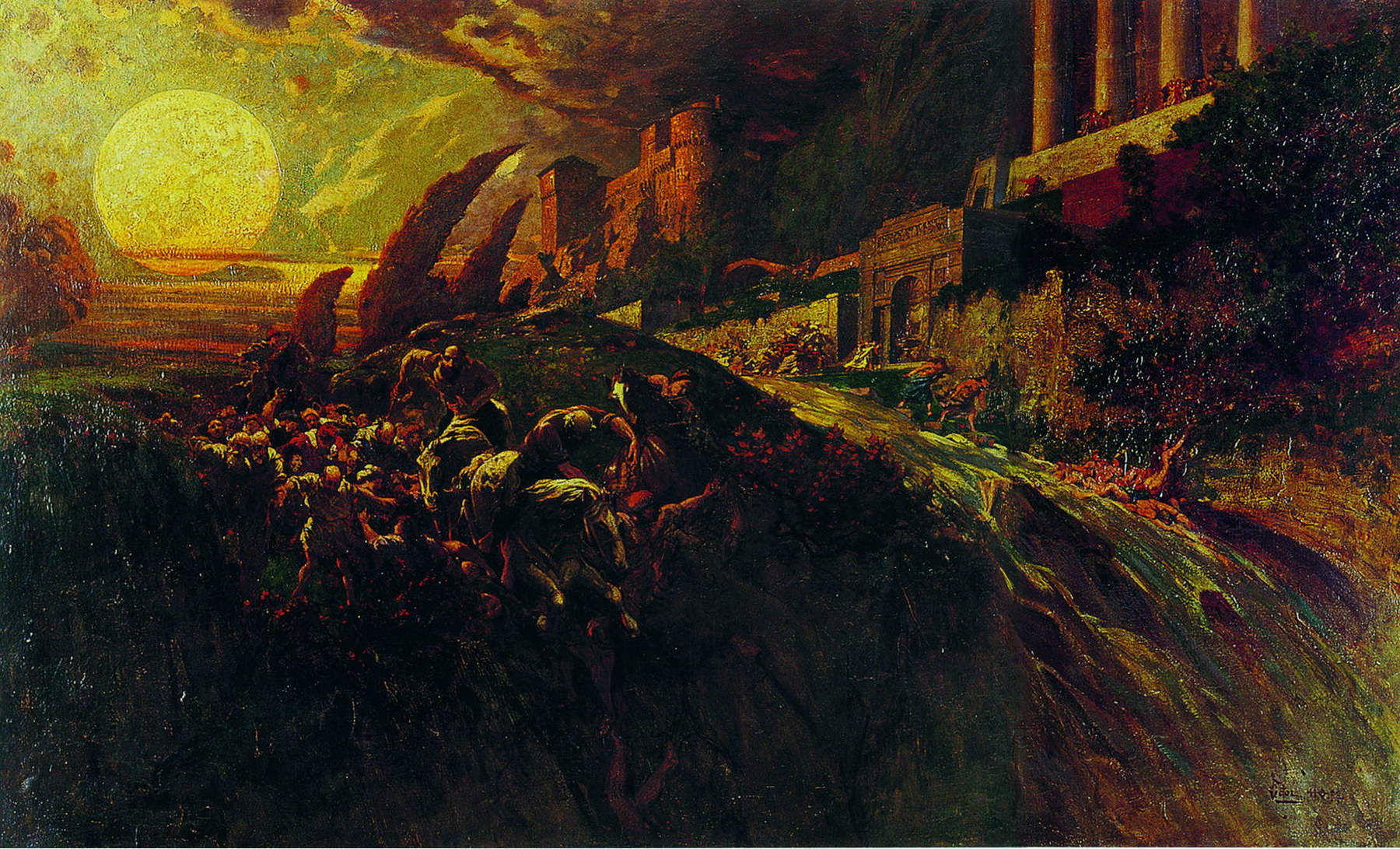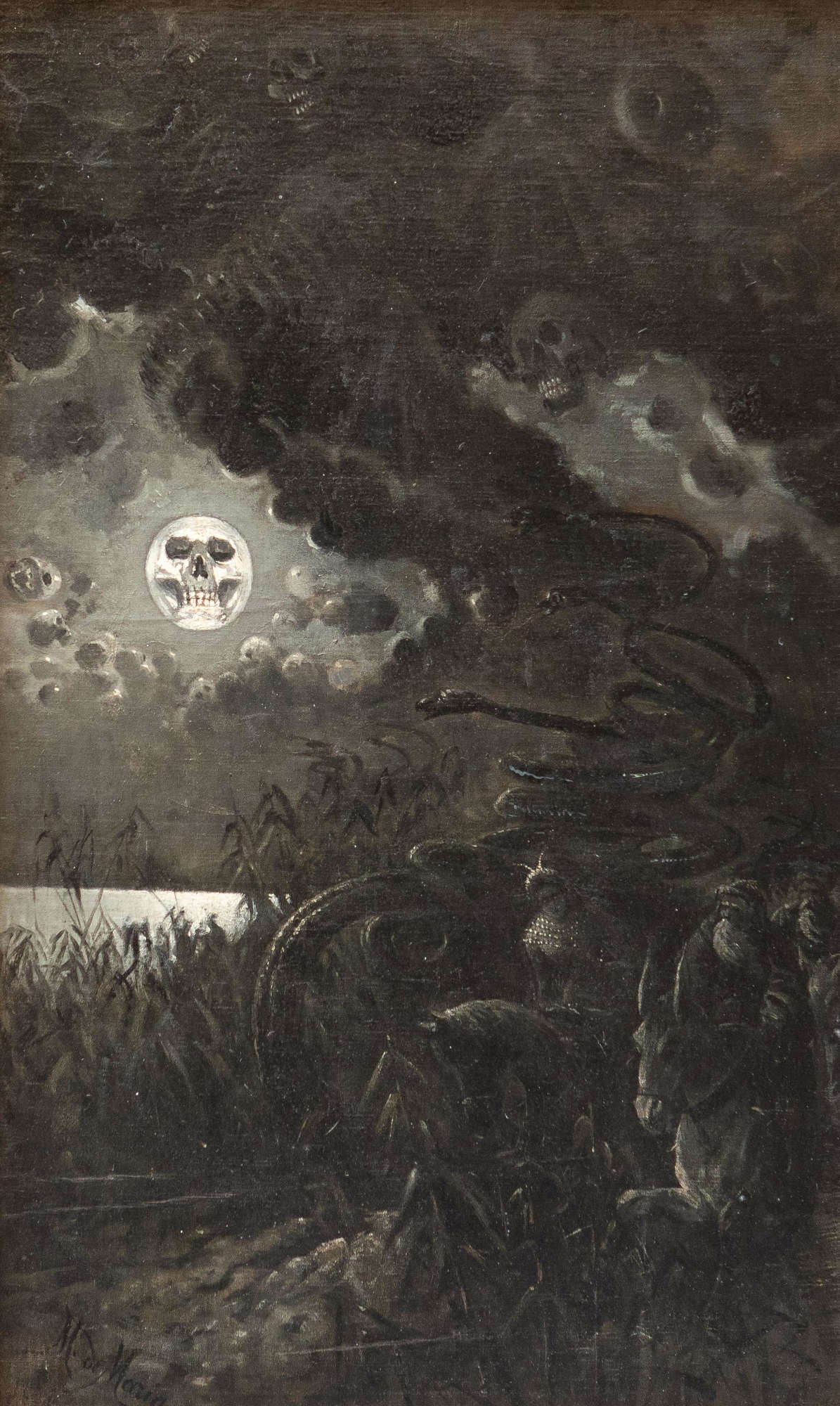One hundred years after his death, the Museo Ottocento Bologna in Bologna celebrates Symbolist painter Mario De Maria (Bologna, 1852 - 1924) through the exhibition Mario De Maria, “Marius Pictor” (1852-1924). Ombra cara. Scheduled from March 21 to June 30, 2024 and curated by Francesca Sinigaglia, it is part of the project Bologna pittrice | Il Lungo Ottocento | 1796 - 1915, an initiative promoted by the Settore Musei Civici Bologna that will involve fifteen exhibition venues outlining a path in Bolognese painting from the Napoleonic age to the beginning of the Great War. The exhibition features 70 paintings from prestigious Italian museum institutions such as: Gallerie degli Uffizi in Florence, Galleria Nazionale d’Arte Moderna e Contemporanea in Rome, Galleria d’Arte Moderna in Milan, and from national and international private collections. An exhibition that delves into the path of the artist, a complex and tormented man who was among the pioneering founders of the Venice Biennale.
The itinerary is outlined as a narrative through the words of the artist, at the center of the artistic changes of the end of the century, starting from his early formative years in Bologna to his Roman experience with Gabriele D’Annunzio, to the analysis of his personal contribution to the founding of the Venice Biennale (several masterpieces from this period are exhibited, including the great painting The Moon Returning to Mother Earth of 1903, from the Venice Foundation). It continues with the large solo exhibition of 1909, the links with Northern Europe and Rembrandt’s painting. A special section of the exhibition is dedicated to the death of his little daughter Silvia, with the work Ombra cara (1911-1914) created in memory of his friend and colleague Vittore Grubicy de Dragon. Mario De Maria attended theAcademy of Fine Arts in Bologna and then moved to Rome, where he opened a studio on Via Margutta. He was among the animators of the group In Arte Libertas, which boasted among its members the best-known international artists of the period-Julio Aristide Sartorio, Dante Gabriel Rossetti, and Arnold Böcklin. The goal of In Arte Liberas was to emancipate itself from the conventions of academic art and embrace a more spontaneous and free representation of nature. The movement originated as a form of protest against official art, perceived as rigid, monotonous and conditioned by the political influences of the time. Painting practice therefore required direct observation of the subject to be represented. In Rome he also came into contact with the most important man of letters of the century-Gabriele D’Annunzio, to whom he was linked by a deep friendship and fruitful collaborations, producing his masterpiece L’alunna (1886) intoned on the verses of Isaotta Guttadauro.


In 1891 he moved to Venice where he had the opportunity to pursue his pictorial research related to the concept of Symbolism. Noteworthy among these is Salome (c. 1890), a large work in which the artist transposes the biblical story into a folk tale, enclosing in the shadows the key to interpreting the entire work. Moving between Venice and Bremen in Germany, the artist deepened his knowledge of Rembrandt’s work, with which he was fascinated. During the period, he created works such as Lilienthal (1901), which depicts a stretch of river surrounded by a red and yellow autumn forest, against the backdrop of a procession of cardinals. The work, considered one of his masterpieces, was officially presented to the public in this exhibition and is a new acquisition by the Museo Ottocento in Bologna.
The period also saw a tragic family event that shocked De Maria: the death of his daughter Silvia. This grief never completely left him, reflecting in his works, which began to display an increasingly dark and dramatic symbolism. Following the loss of his daughter, the artist created significant paintings such as the series of The House of Satan, in which real environments such as the courtyard of a house are transfigured to express a sense of Evil inherent in reality. Another painting from this period is The Nun and the Devil (1922), which recounts the medieval legend of the Arch of Fright in Florence, where a community of nuns was charged with placating a devilish snake by feeding it innocent rabbits to appease its insatiable hunger. Mario De Maria’s Symbolism, however, should be read in the light of the Italian cultural milieu proper to the period from the last two decades of the 19th century to the 1920s, which saw in historical and mythological reenactments direct contact with the divine.
The exhibition is accompanied by a monographic catalog in Italian and English complete with color illustrations and full registry of known paintings, with critical texts by scholars of the painter and the late 20th-century contexts: Elena Di Raddo, Anna Mazzanti, Francesca Sinigaglia.
Opening hours: Daily, 10 a.m. to 7 p.m. Admission: Full € 12.00 - Reduced € 10.00.


 |
| Symbolism through the eyes of Mario De Maria on display in Bologna |
Warning: the translation into English of the original Italian article was created using automatic tools. We undertake to review all articles, but we do not guarantee the total absence of inaccuracies in the translation due to the program. You can find the original by clicking on the ITA button. If you find any mistake,please contact us.